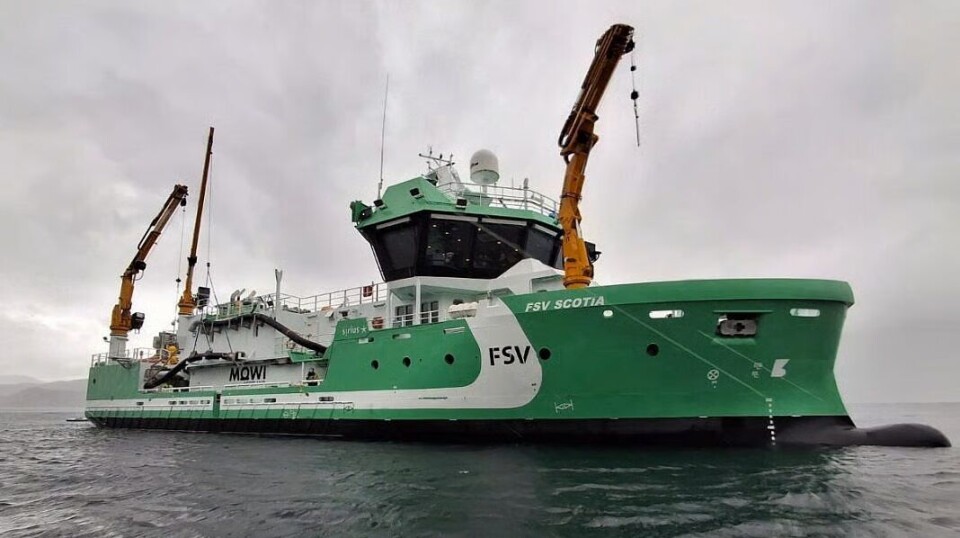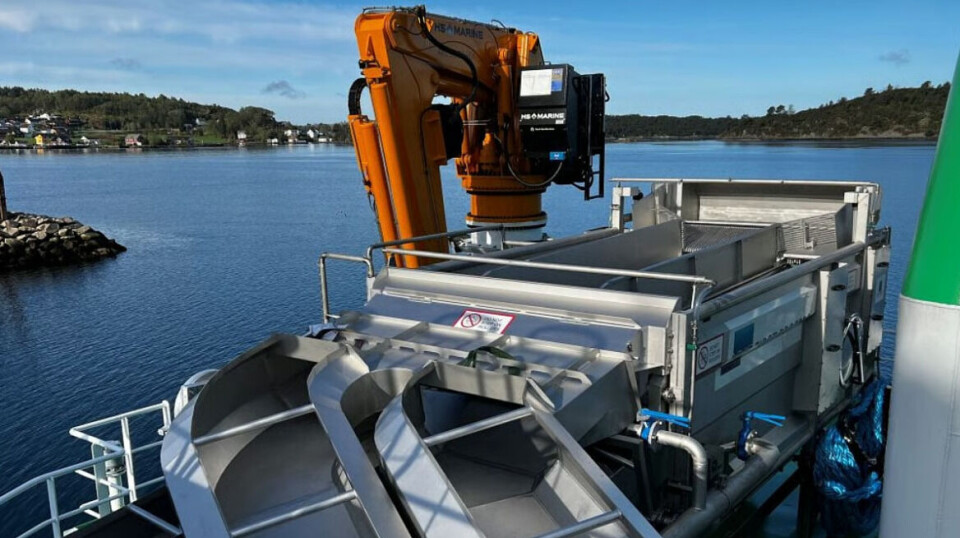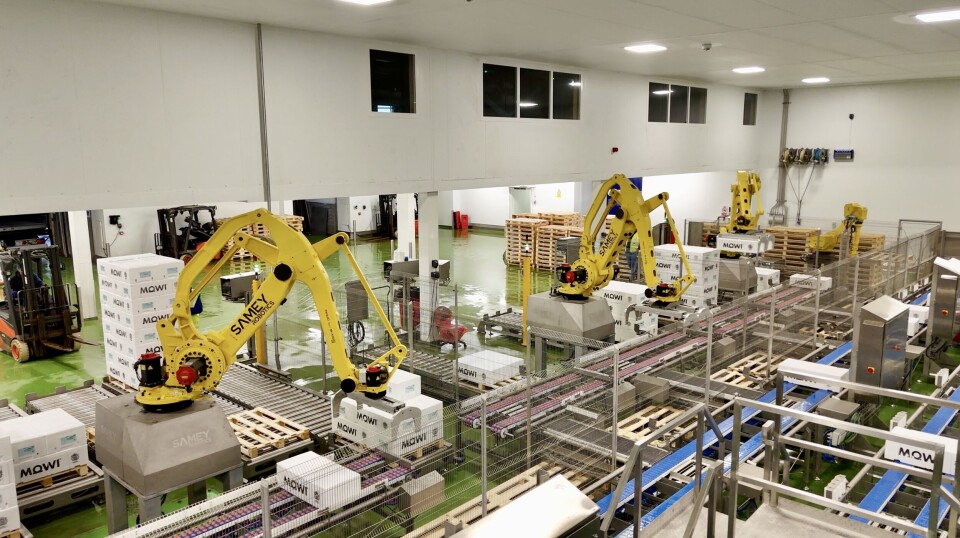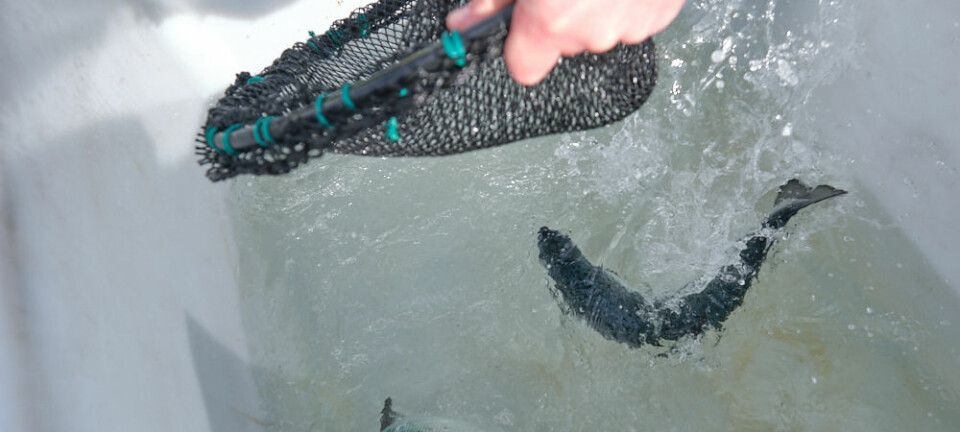
Stun and bleed vessel now at work for Mowi in Scotland
50-metre boat offers many advantages, says owner FSV Group
Norwegian marine services company FSV Group has taken delivery of a new stun and bleed vessel, Scotia, which it is now using to harvest fish for Mowi Scotland.
Stun and bleed vessels pump farmed fish from pens to the ship, sort and count them, and then slaughter them. The fish are stored in refrigerated sea water tanks, which maintain a consistent cold temperature, and are then transported to a processing plant, which in Mowi Scotland’s case is at Blar Mhor, Fort William.
FSV says on its website that the advantages of using stun and bleed vessels include reduced handling of fish, which also reduces stress.
Slaughter at the cage edge also eliminates the risk of mortality during transport and removes the need for storage in holding cages.
It also provides more sustainable and profitable fish transport and slaughter, reduces the risk of disease transmission between sites, and ensures high fish quality due to rapid cooling.
Made in Poland and Norway
Baird Maritime website reports that construction of Scotia’s hull took place at Finomar in Poland, while final outfitting was undertaken at Norwegian shipyard Fitjar Mekaniske Verksted’s facilities in Norway.
Scotia was built by to a design by Sirius Design and Integration.
The vessel is 50 metres long, has beam of 12 metres, and a total cargo capacity of 500 cubic metres.
It has a twin-screw configuration, and side tunnel thrusters at the bow and the stern to ensure additional lateral manoeuvrability.

Mowi has recently spent millions of pounds upgradingand expanding its plant at Blar Mhor to increase capacity. It added an extra 5,000m² of floor space and now has what sales and processing director Scott Nolan says is a modern facility combining cutting-edge innovation with proven, reliable equipment.
“We’ve installed six Baader 144 gutting machines equipped with AI-powered camera technology as part of the grading process, alongside three Baader 142 machines and a dedicated hand line for fish not suited to automation,” he told Mowi Scotland’s staff magazine, The Scoop.
Stacked by robots
“Two Marel graders – each capable of processing up to 120 fish per minute – are supported by two bulk bin graders with the same capacity. The bulk bin graders allow us to efficiently pack fish in our sustainable, returnable packaging, primarily for supply to our value-added plant in Rosyth.
“Feeding the Marel graders is a Micro system that distributes boxes to various packing lines. From there, the process is fully automated: fish are placed into boxes or ‘bins’, labelled, iced, lidded, strapped, passed through metal detection, and then palletised via our Samey robotic system. [Logistics company] DFDS then transports the chilled pallets to our customers. Our Samey robots are now consistently handling over 90% of the boxes produced.”

























































